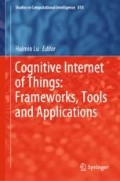Abstract
The flight and departure time nodes for the port and departure flights yield important information about the cooperative decision system of an airport. However, at present, because it would affect normal flight management, airports cannot obtain these data by technical means. By installing a camera on the airport apron and employing a regional convolutional neural network model to identify the targets in the video, such as the aircraft, staff, and working vehicle, the times of the milestone events were determined according to the identified changes in the target shape and target motion state. Furthermore, prior knowledge on the plane gliding curve and ground support operations was obtained by implementing the least squares method to fit the plane gliding curve, and subsequently used to compensate for the occlusion-induced recognition error and enhance the robustness of the algorithm. It was experimentally verified that the proposed target detection-based milestone event time recognition method is able to identify the flight times during the over-station, plane entry, and the milestone launch event.
Access this chapter
Tax calculation will be finalised at checkout
Purchases are for personal use only
References
Hongtao, L., Qinchuan, Z.: Applications of deep convolutional neural network in computer vision. J. Data Acquis. Process. 31(01), 1–17 (2016)
Lu, H., Li, Y., Uemura, T., Kim, H., Serikawa, S.: Low illumination underwater light field images reconstruction using deep convolutional neural networks. Future Gener. Comput. Syst. 82, 142–148 (2018)
Zhang, Y., Gravina, R., Lu, H., Villari, M., Fortino, G.: PEA: parallel electrocardiogram-based authentication for smart healthcare systems. J. Netw. Comput. Appl. 117, 10–16 (2018)
Lu, H., Li, Y., Mu, S., Wang, D., Kim, H., Serikawa, S.: Motor anomaly detection for unmanned aerial vehicles using reinforcement learning. IEEE Internet Things J. 5(4), 2315–2322 (2018)
Lu, H., Li, Y., Chen, M., Kim, H., Serikawa, S.: Brain intelligence: go beyond artificial intelligence. Mob. Netw. Appl. 23, 368–375 (2018)
Cruz-Hernández, H., de la Fraga, L.G.: A fiducial tag invariant to rotation, translation, and perspective transformations. Pattern Recogn. 81 (2018)
Hinton, G.E., Salkhutdinov, R.R.: Reducing the dimensionality of the data with neural networks. Science 313(5786), 504–507 (2006)
Carbonneau, M.A., Cheplygina, V., Granger, E., Gagnon, G.: Multiple instance learning: a survey of problem characteristics and applications. Pattern Recogn. 77 (2018)
Hubel, D.H., Wiesel, T.N.: Receptive fields, binocular interaction and functional architecture in the cat’s visual cortex. J. Physiol. 160(1), 106–154 (1962)
Fukushimak, K., Miyake, S.: Neocognitron: anewalgorithm for pattern recognition tolerant of deformations and shifts in position. Pattern Recogn. 15(6), 455–469 (1982)
Guanghui, S.: Research on image labeling method based on migration learning and deep convolution features. Zhejiang University (2017)
Guohao, L.: Research on image restoration, enhancement and registration method for railway operation environment detection. Beijing Jiaotong University (2017)
Romanuke, V.V.: Appropriate number of standard 2 × 2 max pooling layers and their allocation in convolutional neural networks for diverse and heterogeneous datasets. Inf. Technol. Manage. Sci. 20(1) (2017)
Havaei, M., Davy, A., Warde-Farley, D., Biard, A., Courville, A., Bengio, Y., Pal, C., Jodoin, P.M., Larochelle, H.: Brain tumor segmentation with deep neural networks. Med. Image Anal. 35 (2017)
Author information
Authors and Affiliations
Corresponding author
Editor information
Editors and Affiliations
Rights and permissions
Copyright information
© 2020 Springer Nature Switzerland AG
About this chapter
Cite this chapter
Lu, Z., Ji, T. (2020). A Target Detection-Based Milestone Event Time Identification Method. In: Lu, H. (eds) Cognitive Internet of Things: Frameworks, Tools and Applications. ISAIR 2018. Studies in Computational Intelligence, vol 810. Springer, Cham. https://doi.org/10.1007/978-3-030-04946-1_21
Download citation
DOI: https://doi.org/10.1007/978-3-030-04946-1_21
Published:
Publisher Name: Springer, Cham
Print ISBN: 978-3-030-04945-4
Online ISBN: 978-3-030-04946-1
eBook Packages: Intelligent Technologies and RoboticsIntelligent Technologies and Robotics (R0)

